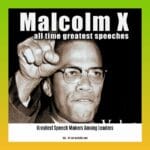Immerse yourself in the captivating world of political oratory and uncover the secrets behind the most rousing speeches by political leaders in [Decoding the Power of Rousing Speeches by Political Leaders]. This insightful guide unveils the rhetorical techniques, persuasive strategies, and emotional triggers that ignite audiences and shape political landscapes. Prepare to delve into the minds of master orators and discover the art of crafting speeches that resonate, inspire, and mobilize nations.
Key Takeaways:

- Roosevelt’s Inaugural Speech: Emphasized the importance of government action and economic reforms during challenging times.
- “I Have a Dream”: Advocated for racial equality and civil rights, inspiring a movement for change.
- Tilbury Speech: Rallying speech that inspired courage and resilience against overwhelming odds.
- “Ain’t I a Woman”: Powerful oratory demanding women’s rights and the abolition of slavery.
- Wilson’s Address to Congress: Persuasive speech that led to the United States entering World War I to protect democracy and freedom.
Rousing Speeches by Political Leaders
Political leaders often use rousing speeches by political leaders to inspire, motivate and galvanize audiences. These speeches have the power to shape history.
Elements of an Effective Rousing Speech
- Know Your Audience: Craft a speech that resonates with your audience.
- Craft a Compelling Narrative: Use vivid language and storytelling to create a memorable narrative.
- Establish a Clear Purpose: State your main message concisely.
- Use Rhetorical Devices: Use techniques like repetition and alliteration to enhance impact.
- Appeal to Emotion: Connect with your audience by evoking hope, inspiration, or anger.
- Call to Action: End with a clear call to action.
- Practice and Delivery: Rehearse your speech to ensure smooth delivery.
Case Studies of Rousing Political Speeches:
Martin Luther King Jr.’s “I Have a Dream” speech: Advocated for racial equality.
Winston Churchill’s “Their Finest Hour” speech: Inspired confidence during World War II.
Barack Obama’s “A More Perfect Union” speech: Defended marriage equality.
Types of Rousing Political Speeches
- Inspirational speeches: Uplift and motivate audiences.
- Crisis speeches: Address challenging times.
- Persuasive speeches: Convince audiences of a specific viewpoint.
- Campaign speeches: Seek votes or support.
- Commemorative speeches: Honor events or individuals.
From political leaders known for their speeches to the greatest speech makers among leaders, these figures have left an indelible mark on history with their eloquence and oratory skills. Their speeches have not only inspired generations but have also played a pivotal role in shaping political and social movements around the globe. Discover the captivating orators and explore the power of words with these internal links to articles that celebrate political leaders celebrated for oratory.
Establish a Clear Purpose
The cornerstone of a rousing political speech lies in establishing a clear purpose. It serves as the compass guiding your every word, ensuring your audience grasps your central message with laser-like clarity.
Imagine yourself standing behind the podium, the weight of your words poised to ignite passion and galvanize action. Before uttering a single syllable, you must define your speech’s purpose. What do you want your audience to remember long after the echoes of your voice fade?
Your purpose could be to:
- Inspire hope and ignite a shared vision.
- Persuade them to embrace a specific policy or viewpoint.
- Call on them to take action, whether it’s voting, donating, or mobilizing their communities.
Once you have established a clear purpose, you can craft a narrative that weaves together compelling arguments, vivid imagery, and emotional appeals. It will resonate deeply with your listeners, leaving an indelible mark on their hearts and minds.
Key Takeaways:
- Define your speech’s purpose before crafting it.
- Keep your purpose focused and concise, centering on one or two key points.
- State your purpose clearly and confidently at the outset of your speech.
- Tailor your purpose to align with your intended audience.
Most Relevant URL Source:
- TED Ideas: Tap into the Power to Persuade
Use Rhetorical Devices
Political leaders throughout history have relied heavily on rousing speeches to mobilize and inspire their followers, rally support for their causes, and shape the course of nations. These speeches are carefully crafted to evoke strong emotions, persuade audiences, and leave lasting impressions. One key element that enhances the effectiveness of these speeches is the use of rhetorical devices.
Rhetorical devices are language techniques that add emphasis, clarity, and emotional appeal to speeches. By employing these devices, political leaders can captivate their audiences, make their words more memorable, and reinforce their messages. Some commonly used rhetorical devices include:
- Repetition: Repeating words or phrases for emphasis and rhythm.
- Alliteration: Using words with similar consonant sounds for a pleasing effect.
- Parallelism: Constructing sentences or phrases with a similar structure for clarity and impact.
- Metaphor: Using figurative language to compare two unrelated things, creating vivid imagery and emotional connections.
- Simile: Comparing two things using “like” or “as” to illustrate a point or evoke a specific feeling.
By incorporating these rhetorical devices into their speeches, political leaders can enhance their persuasive power, connect with their audiences on a deeper level, and leave a lasting impact on history.
Key Takeaways:
- Rhetorical devices are powerful language techniques used by political leaders to enhance the effectiveness of their speeches.
- They add emphasis, clarity, and emotional appeal, making speeches more memorable and persuasive.
- Commonly used rhetorical devices include repetition, alliteration, parallelism, metaphor, and simile.
- Through the strategic use of rhetorical devices, political leaders build stronger connections with their audiences and leave a lasting impression.
Most Relevant URL Source:
Appeal to Emotion
Political leaders throughout history have harnessed the power of appealing to emotion to connect with audiences, rally support, and shape the course of events. A well-crafted speech can ignite passion, evoke empathy, and influence decisions.
Key Takeaways:
- Understand Your Audience: Tailor your speech to resonate with their values, beliefs, and concerns.
- Craft a Compelling Narrative: Use storytelling, vivid language, and personal anecdotes to create an emotional connection.
- Employ Rhetorical Devices: Repetition, alliteration, and parallelism can enhance the impact and memorability of your message.
- Use Passion and Charisma: Engage with your audience on a personal level, showing passion for your cause and connecting with their emotions.
- Tell Personal Stories: Share experiences that illustrate your points and make them relatable to your listeners.
- Highlight Shared Values: Emphasize the common ground between you and your audience, appealing to their sense of belonging and identity.
- Evoke Hope and Inspiration: Inspire your audience with a vision of a better future and motivate them to action.
Most Relevant URL Source:
- Exploring Political Rhetoric: How Politicians Use Language to Influence













